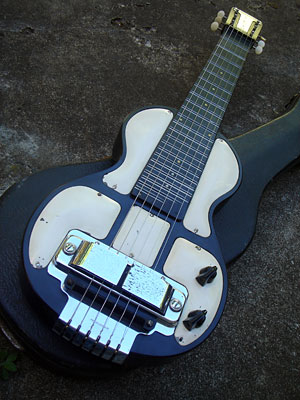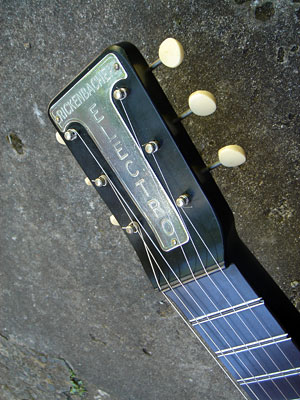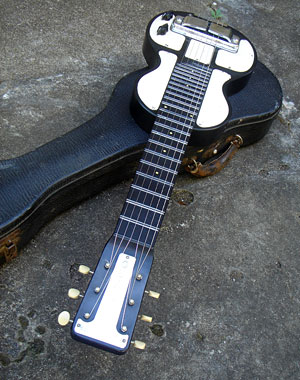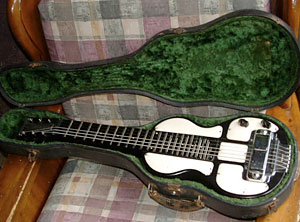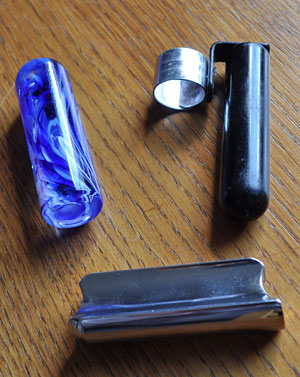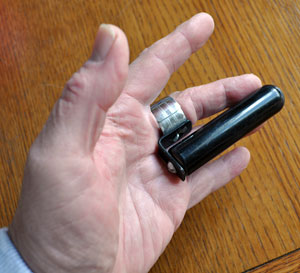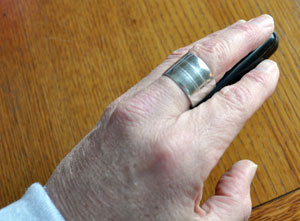Late '40s Rickenbacher Model B Lap Steel
This was bought from Knoxville Tennessee in October 2009, and cost me about AU$1200 at the time. I sold it to a guy in Canberra Australia in April 2013 due to a change in financial priorities (I'd bought a house). I always regretted selling it so in January 2020 I bought a late '30s - early '40s one.
The model B was made from 1935 to 1955 but this particular example is typical of those made between 1946 and 1950. It has the 1¼” pickup and the T-shaped headstock logo plate that was introduced in 1946. In 1950 the T-shaped logo plate was discontinued. In a 1949 music store catalogue they are listed at $95.16.
This pickup design is known as the 'horse shoe' pickup. It has been widely copied, not only in its own day when Kay apparently copied the design, but Cole Clark also did one on its modern lap steels for a while.
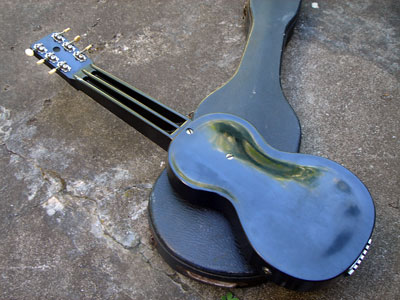
There doesn't appear to be a serial number on it but there is a patent number stamped on the chrome tailpiece - 2089171 - and another one on the body just under the tailpiece - 1881229. In any event the features date it to within a 4 year period from 1946.
Under each of the white metal plates on the body there is an empty chamber that no doubt contributes to the sound, but would also help to keep the weight down a bit. This is a very heavy instrument for its size.
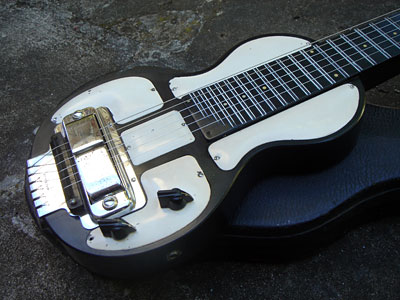
It is much the same as the lap steel used by David Lindley on the hugely popular early records by Jackson Browne, although the year and the size of the pickup may well have been different. For much of its history the model B used a 1½” pickup instead of the narrower one on this example. Pre-war bakelite models with the 1½” are apparently the most collectible (i.e. the most expensive). Nonetheless, my one is at least as loud as any of my other vintage lap steels, and has a fantastic tone.
The pots on this one were new and I believe that the chicken head knobs are also non original, but they look very much in character. The tuners appear to be pretty old but may not be original as they are a very tight fit in the case.
It had a few fairly nasty chips out of the bakelite when I got it, most noticeably on the nut on the low string side but there were also 2 "frets" that had big chips out of them (see below). I found an online forum by a guy who restores those old bakelite phones, followed his instructions and - bingo! - it worked. Basically the process involves using fibreglass resin, colouring it black, and using that to gradually build up the areas that are missing. One problem is that the resin is quite liquid (like honey on a warm day) so you need to create a kind of mold using tape and / or flexible plastic so it doesn't just flow down the sides. Then when it's hard you need to file it and sand it and polish it so it looks like the bakelite.
It was a very time consuming process that tested my patience quite a lot, but if you need any details about the products I used please email me.
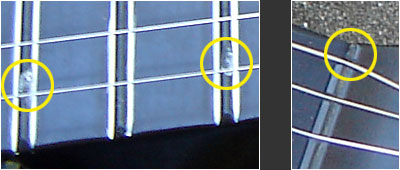
Damage to 2 frets and to nut
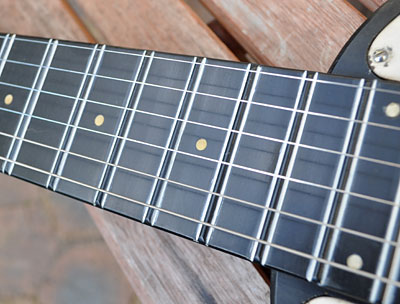
Repaired frets - can't even see where the damage was
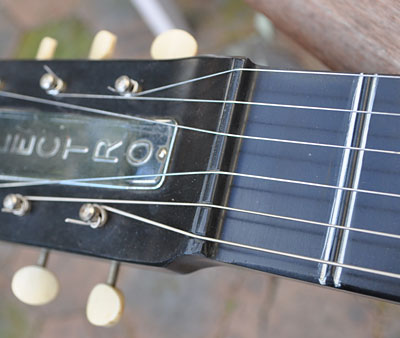
Partly repaired nut
More Info
- Early history of electric instruments and Rickenbacher
- Serial numbers and model info
- Greg Cutshaw - Steel Guitar
- Brad's page of Steel
- String gauge guide
This is intended for pedal steel but is also useful for lap steels. - My string gauges
- Diamond Bottlenecks
Lead crystal custom-made slides that have an unbelievable tone. - Bakelite repairs and restoration
- Lap steel capos
